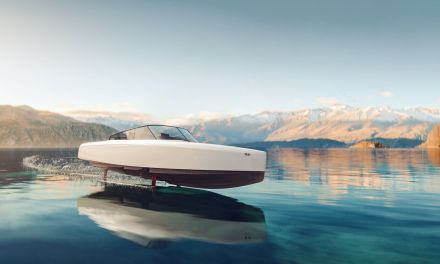Envisics announced today receiving over $50 million as part of its Series C strategic funding round led by Hyundai Mobis, a strategic investor from the Series B round in 2020. Additional investments from new strategic shareholders InMotion Ventures, the investment arm of Jaguar Land Rover, and Stellantis. Envisics’ holographic technology enables market-leading AR HUD (augmented reality head-up displays) technology that is becoming a key differentiating brand feature for automakers.
“Since our Series B funding round, we have focused on growing Envisics into a key enabler for next-generation mobility experiences,” said Envisics’ CEO and Founder, Dr. Jamieson Christmas. “The caliber of our investors demonstrates the significance attached by global automakers to the transformation of vehicle interfaces and interior architectures. Our solutions are an exceptional fit for OEM requirements and provide platforms that enable the creation of unique brand experiences.”
Envisics Ltd. is a private company registered and headquartered in the U.K. and owned by Envisics Inc., a Delaware corporation. Following the Series C financing round, the company’s ownership structure includes strategic investors Tarsadia Investments, GM Ventures, Hyundai Mobis, Stellantis Ventures, SAIC Motors, and Van Tuyl Companies.
“As early investors in Envisics, we have seen both an acceleration of their technology and a shift in the market towards AR HUD solutions,” said Mitchell Caplan, President of Tarsadia Investments and Chairman of Envisics Inc. “This latest funding round gives Envisics the runway needed to realize the commercial potential of dynamic holography in the auto industry and beyond.”
The AR HUD market is entering a growth phase fueled by the introduction of new technologies such as those being developed by Envisics. Based on global market research, the company says that the addressable AR HUD market is forecast to deliver a compound annual growth rate of 28%, growing from 1.6 million units in 2022 to 19.1 million in 2032.
Envisics says its Dynamic Holography Platform combines proprietary algorithms with simpler, fewer, and more robust optics to create holographic displays with greater magnification, superior image quality, and images displayed at multiple distances simultaneously. The company claims that existing technologies squander more than 90% of the available illuminating light when projecting imagery, creating heat and wasting energy.
The technology generates imagery with claimed unmatched levels of clarity, depth, and color saturation with innovative control of lasers. The company’s algorithms and high magnification redistribute the light to where and when it is needed.
All light control elements on its holographic modulator contribute to every point in the image it creates. Augmented reality imagery is delivered on multiple planes and at different distances simultaneously, and it adapts instantly to ambient light changes.
The platform is small, flexible, and easily adaptable across manufacturer models that have cross-car beams and HVAC competing for space. The small packaging is enabled by ultra-high magnification for a wide field of view and a thermally efficient design. An Envisics-enabled HUD has greater brightness and consumes 50% less power.
“Hyundai Mobis expects to provide next-generation AR-HUDs with cutting-edge holographic technology, and to deliver an intuitive, safe, and convenient HMI to global automakers by strengthening our partnership with Envisics,” said Younghoon Han, Vice President and Head of Electronic Control and Convenience, Hyundai Mobis.
General Motors will be the first company to deploy the Envisics second-generation AR-HUD technology in the 2024 Cadillac Lyriq.
“This innovation will further elevate the driving experience in the Lyriq, adding a second plane of graphics that gives drivers more immersive information integrated within their natural field of vision,” said Sandy Lipscomb, Senior Manager, Ultifi Design at General Motors.
In 2010, Jaguar Land Rover was the first automaker to realize the potential of Envisics holographic technology for HUD applications and was the first OEM customer of the technology.
- Envisics’ AR HUD technology can aid safety and the user experience.
- Envisics’ AR HUD technology can aid safety and the user experience.
- Envisics’ AR HUD technology can aid safety and the user experience.
- Dr. Jamieson Christmas is Envisics’ CEO and Founder.




















































































